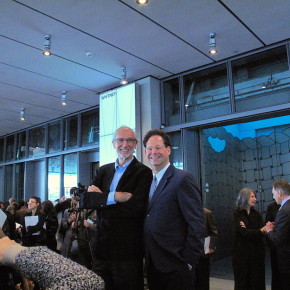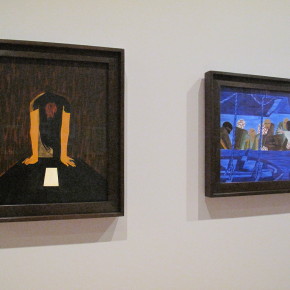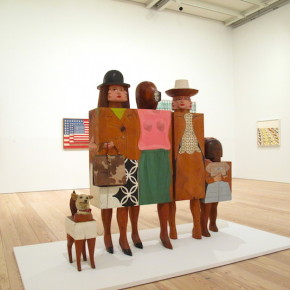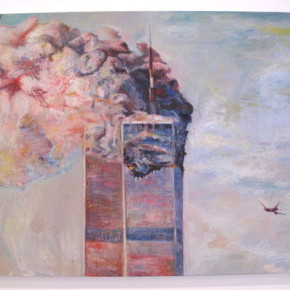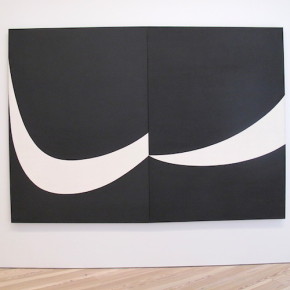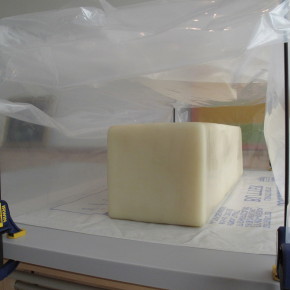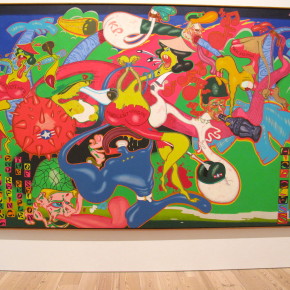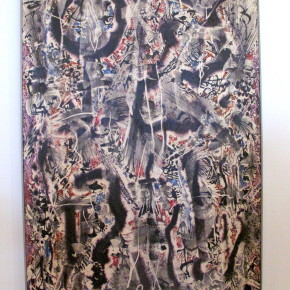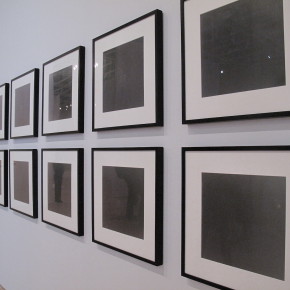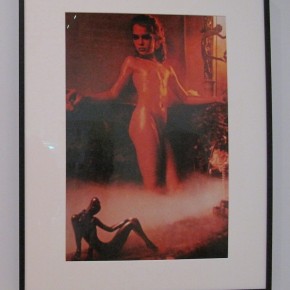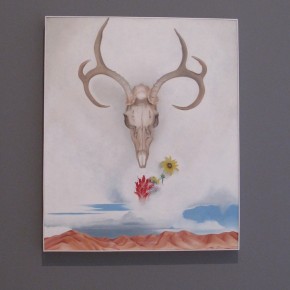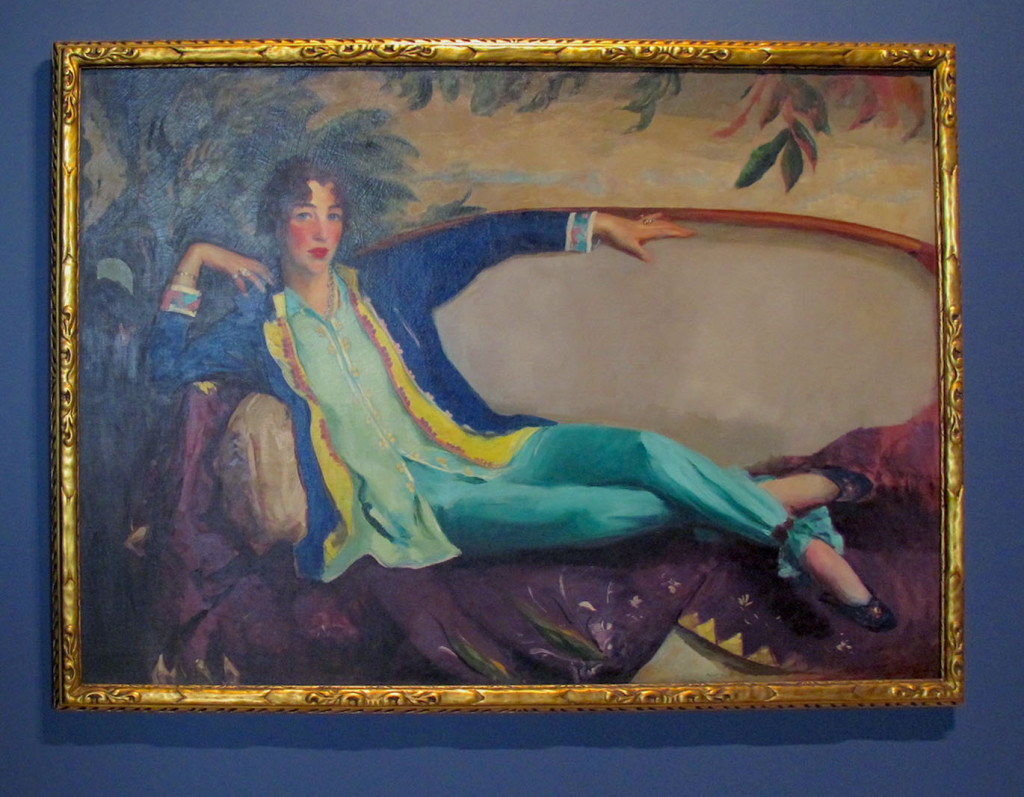
This Bae. Robert Henri, “Gertrude Vanderbilt Whitney”, 1916, Oil on canvas, Whitney Museum, New York, Photograph by Katy Hamer, 2015
“If only my mother could be here today,” said a beaming Adam Weinberg as he stepped up to the podium as part of a press conference held to introduce the new home of the Whitney Museum of American Art. He overlooked a mass of press diligently taking notes and snapping photographs in the lobby or as architect Renzo Piano referred to it, the piazza. Continuing he stated, “A tremendous outpouring of imagination and faith have brought us to this transformative moment for the Whitney. The manifestation of a long-held dream, that began a century ago with Gertrude Vanderbilt Whitney’s belief in the importance of American art and culture. It is her vision that continues to inspire and guide the Whitney Museum today.” Following Weinberg’s introduction, Renzo Piano addressed those present saying “Well, what can I say? You know very well that a singer should not explain the song before they sing. So I will not explain anything, you have to go around and enjoy. Anyway, welcome to the Whitney. I don’t call it the new Whitney, this is the Whitney and that was a big challenge. The building made by Mr.Marcel Breuer, in the 1960s was a fantastic building. I love that building and everyone loved that building. It was not easy to come here and to still remain the Whitney Museum. This is why I like to say ‘Welcome to the Whitney Museum.'” Then continuing, “This idea for a building that flies above town, is something that we started a long time ago,” stating, “In some way, you enter into a different world, specifically when you go up [to the higher level galleries]. You enter the world of art and freedom. This is fundamentally what this is about. On the East Side, the building talks to the city and on the West Side, the building talks to the rest of the world.” Thousands of people came together to bring the building and the new location to fruition. The opening is a happening, a feat, and has officially raised the bar for all American museums.
Sitting on the corner of Gansevoort Street and tenth avenue in the Meatpacking district of Manhattan, the museum is constructed a huge amount of steel and contains 28,000 tons of steel and a budget of over 700 million dollars (55 million was given by the city of New York under Mayor Michael Bloomberg). A vast ship docked and overlooking the Hudson River, the building is somewhat unassuming from its exterior, but once inside, its mission and purpose are quite clear; to house and exhibit works of art. There is an elegance and pride in that unspoken declaration and it is evident in the domineering strength of the architectural lines that are both eye-catching and unencumbered, allowing the artwork on view to be the beating heart, pumping fluid metaphorically through each room, giving the structure and each visitor, a purpose.
The inaugural exhibition is titled “America Is Hard To See” (May 1 – September 27, 2015), and includes more than 600 works of art by 400 artists from the Whitney’s permanent collection. Some of the works are familiar from the Madison Avenue building but appear different, brighter, in this new space. Other pieces have come out of storage, and are being granted a time to shine amongst other works ranging from 1900 to present. Intricately woven, the exhibition is a masterpiece of American art of the last 115 years. Organized by Chief Curator and Deputy Director for Programs Donna De Salvo, along with Carter E. Foster, Steven and Ann Ames Curator for Drawing; Dana Miller Curator of the Permanent Collection; Scott Rothkopf, Nancy and Steven Crown Family Curator and Associate Director of Programs; Assistant Curators Jane Panetta and Catherine Taft and Curatorial Assistant Mia Curran.
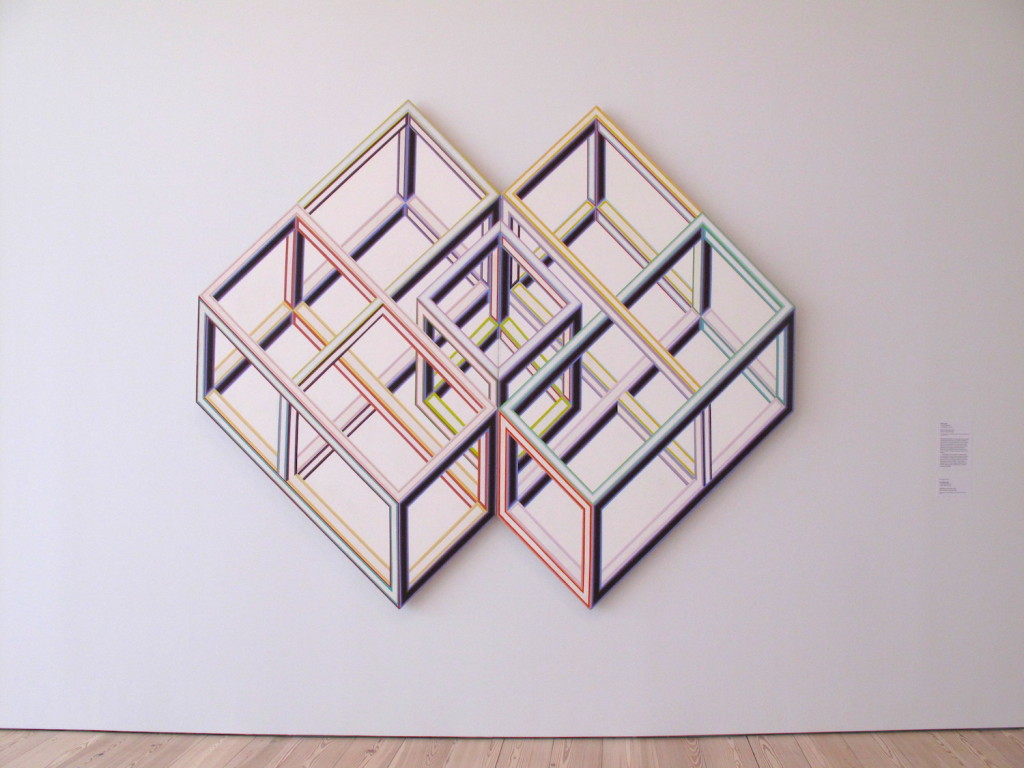
Alvin Loving, Rational Irrationalism, Acrylic on shaped canvas, 1969, Whitney Museum of American Art, Photograph by Katy Hamer, 2015
Situated throughout the eight floors of the building, the exhibition brings together painting, drawing, sculpture, photography and video works made by male and female artists, straight and queer. There is a focus on the body, on painting, on abstraction and on removal; all of the ingredients that when brought together offer a delectable, visual smorgasbord, a culmination of American art arriving at today.
Established in 1931, the original Whitney Museum was on West Eighth Street in Greenwich Village. Now in it’s third and by far most sizable location-the museum boasts some of the largest gallery interiors of any American museum-the Gertrude Vanderbilt Whitney legacy not only lives on, but glistens. At the core of the collection is a preservation of moments via the hand and eye of the artist. Starting on the top floor and walking down, at times by way of the outdoor terrace staircases, “America Is Hard To See” ventures from the topical political gesture of a Post-World War sentiment transcribed in paint to the poignant and real documentation of the AIDS crisis in the 1980s and early 1990s leading towards current bodily representations filtered through technology. Divided into various parts chronologically, each section presents an inquiry ripe for contemporary engagement. Whether questioning cultural stigma through gender, reacting to industrialization in a machine age, or the delving into a humanistic role facing (or mirroring back) nature, there is a universal quality to much of the work on view. That being said, New York as a muse, is ever-present, in not only the mark-making of the past, but through the vista of nearly every window, the city peeks in as if an adoring mother watching her child grow. In fact, the Whitney collection continues to expand and the third floor (with the youngest artists) offers a film program with works by Kalup Linzy and Jacolby Satterwhite, sculpture by Rachel Harrison and a VHS film by Jordan Wolfson, proving it is still on the pulse of what is occurring today. The #newwhitney as it’s being called, is a game changer. Not only can it continue to activate the dialogue of the past but challenge, educate and expand upon the perceptions of American art from the twentieth century to today. This Renzo Piano designed structure has given new life to paintings which may have been ignored, new color dependent on seasonal light, and a revitalization of formal relationships, that for the time being (in this particular exhibition), are completely in sync. The curators have wed art history by divorcing it first and then reconnecting. Accessibility to bigness gently evokes the reassertion of artistic purity and human imperfection. It’s a not a new trope but one that is rarely obtainable due to extraordinary circumstances or lack of resources. The new Whitney Museum of American Art has superseded expectations and the inaugural exhibition illustrates and functions as a reminder-amongst so many poorly curated exhibitions-of the larger story waiting to be told, one that is beyond an individual artwork and that of a time. That time is today. Believe the hype.
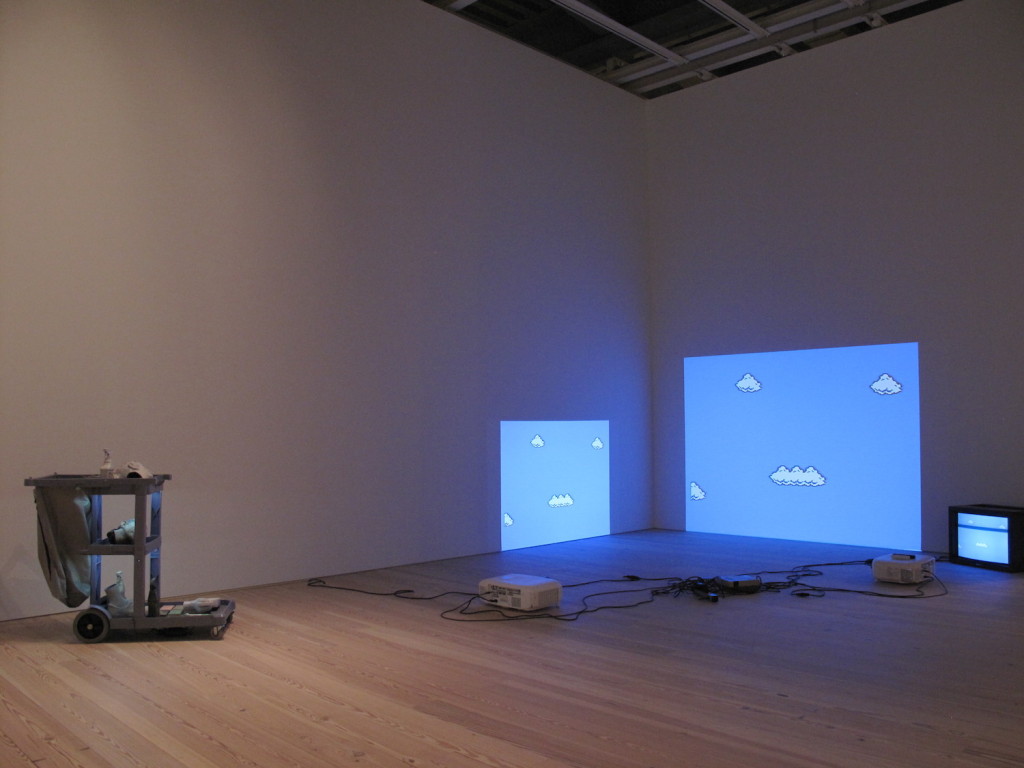
Josh Kline (left), Cost of Living (Aleyda), Plaster, ink, and cyanoacrylate: janitor cart: and LEDs, 2014, Cory Arcangel (right), Super Mario Clouds, Handmade hacked Super Mario Brothers cartridge and Nintendo NEW video game system Edition no. 2/5, 2002, Whitney Museum of American Art, Photograph by Katy Hamer, 2015
To celebrate the opening, the Empire State Building will present a light show inspired by works from the Whitney’s permanent collection on May 1 from 8PM until 2AM. Artists whose work inspired this event include Barbara Kruger, Andy Warhol, Peter Halley and others.
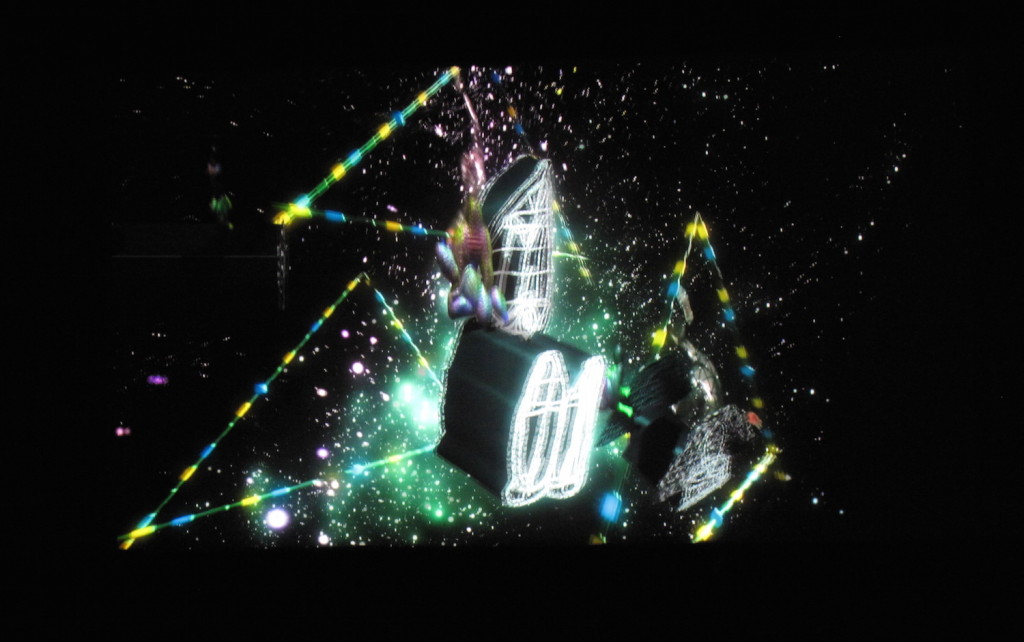
Jacolby Satterwhite, Still from Reifying Desire 6, Video, color, sound; 24:04 min., 2014, Whitney Museum of American Art, Photograph by Katy Hamer, 2015
The only critique I have, is not of the exhibition or the venue but rather when I tried to locate the placard for a particular artwork on view the guard I inquired with didn’t speak english well-enough to understand and passed me onto someone else. A bit surprising but then again, this is America, a melting pot of variance, so perhaps actually appropriate. All the museum staff I spoke with were absolutely delightful and we shared smiles, inspired by newness, light, and art. Below is a selection of photographs from the exhibition “America Is Hard To See”. Now is your chance. ~KDH
- Installation view, The Whitney Museum of American Art, Photograph by Katy Hamer, 2015
- Peter Campus, three transitions, video, color, sound, 4:53 minutes, 1973, The Whitney Museum of American Art, Photograph by Katy Hamer, 2015
- Jacob Lawrence, War Series: The Letter, 1946 (left) and Going Home, 1947, The Whitney Museum of American Art, Photograph by Katy Hamer, 2015
- Marisol, Women and Dog, Wood, plaster, acrylic, taxidermic dog head and found objects, 1963-64, The Whitney Museum of American Art, Photograph by Katy Hamer, 2015
- George Tooker, The Subway, Tempera on composition board, 1950, The Whitney Museum of American Art, Photograph by Katy Hamer, 2015
- Keith Mayerson, 9-11, Oil on linen, 2007, The Whitney Museum of American Art, Photograph by Katy Hamer, 2015
- Elizabeth Peyton, Barack and Michelle Obama, 2013, The Whitney Museum of American Art, Photograph by Katy Hamer, 2015
- Sarah Charlesworth, Fear of Nothing, Two silver dye bleach prints mounted on board with frames, 1987 (partially refabricated 2012), The Whitney Museum of American Art, Photograph by Katy Hamer, 2015
- Ellsworth Kelly, Atlantic, Oil on canvas, 1956, The Whitney Museum of American Art, Photograph by Katy Hamer, 2015
- Jay DeFeo, The Rose, Oil with wood and mica on canvas, 1958-66, The Whitney Museum of American Art, Photograph by Katy Hamer, 2015
- David Hammons, Untitled, 1992, Center installation view, various media, Whitney Museum of American Art, Photograph by Katy Hamer, 2015
- Detail from Rob Gober, beeswax “butter” and wax paper, in the newly expanded department of restoration, The Whitney Museum of American Art, Photograph by Katy Hamer, 2015
- Peter Saul, Saigon, Acrylic oil, enamel, and ink on canvas, 1967, The Whitney Museum of American Art, Photograph by Katy Hamer, 2015
- Alfonso Ossorio, Number 14 – 1953, Ink and wax on board, 1953, The Whitney Museum of American Art, Photograph by Katy Hamer, 2015
- Peter Blume, Light of the World, Oil on composition board, 1932, The Whitney Museum of American Art, Photograph by Katy Hamer, 2015
- Adrian Piper, Food for the Spirit, 1971 (printed 1997), Fourteen gelatin silver prints, Whitney Museum of American Art, Photograph by Katy Hamer, 2015
- Richard Prince, Spiritual America, Chromogenic print, 1983, Whitney Museum of American Art, Photograph by Katy Hamer, 2015
- Georgia O’Keefe, Sumer Days, Oil on canvas, 1936, The Whitney Museum of American Art, Photograph by Katy Hamer, 2015
- Mark Bradford (left), Bread and Circuses, Found paper, metal foil, acrylic, and string, 2007, Jordan Wolfson (right), Unitled, 2007, The Whitney Museum of American Art, Photograph by Katy Hamer, 2015
- Allan D’Arcangelo, Madonna and Child, Acrylic and gesso on canvas, 1963, The Whitney Museum of American Art, Photograph by Katy Hamer, 2015

David Wojnarowicz, Untitled, Three gelatin silver prints, 1989, (at the deathbed of artist Peter Hujar who died of AIDS-related causes), The Whitney Museum of American Art, Photograph by Katy Hamer, 2015
More soon!
xo

